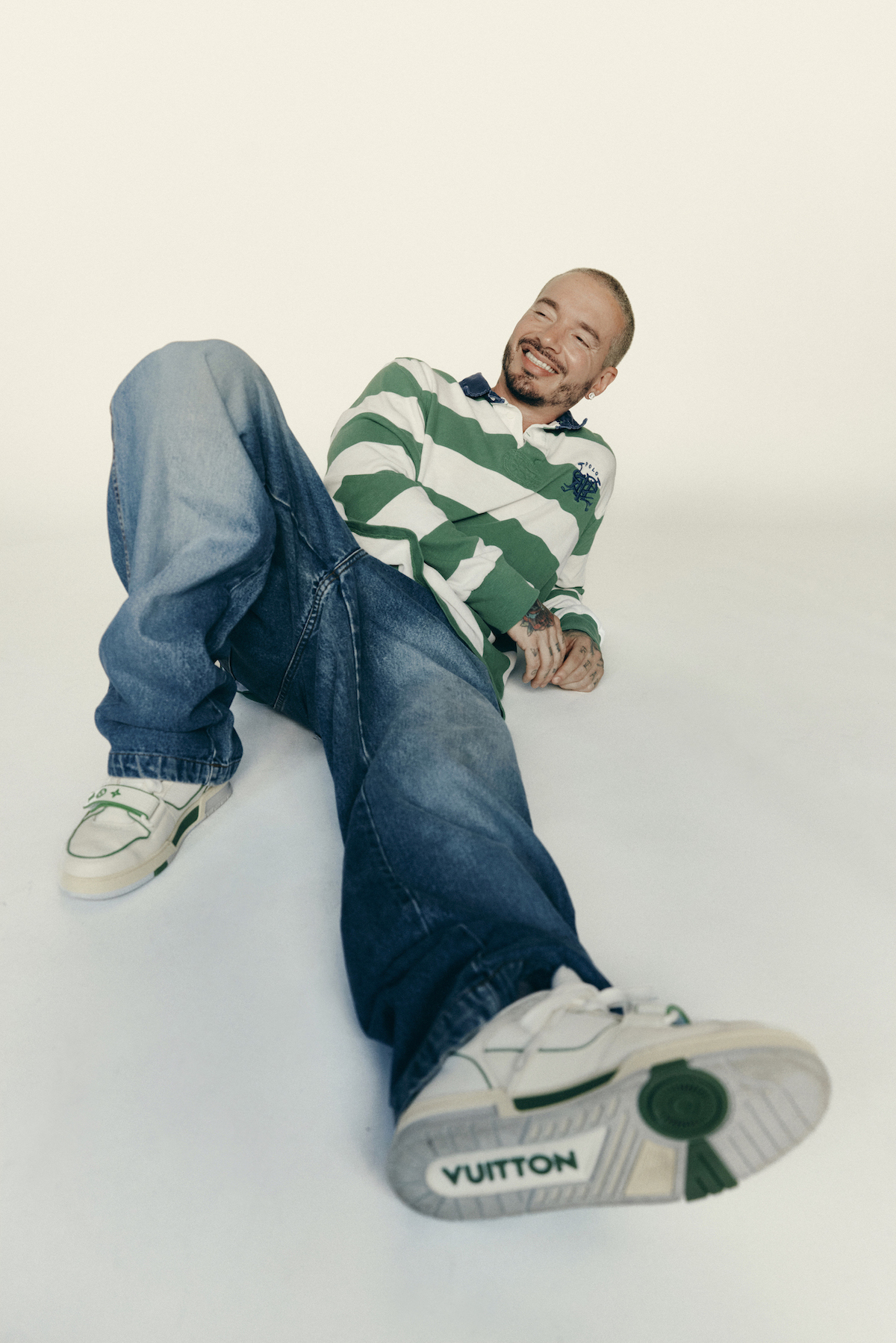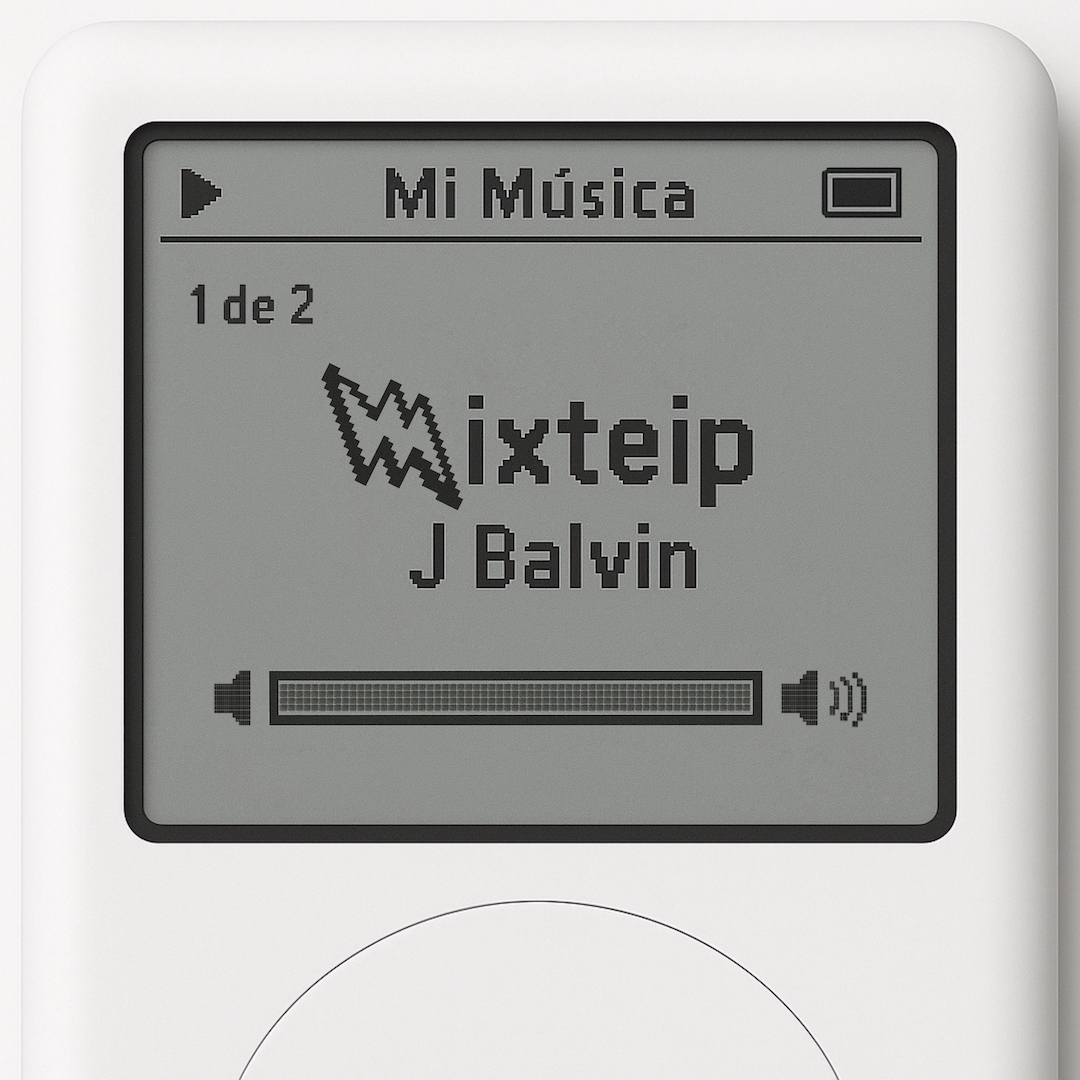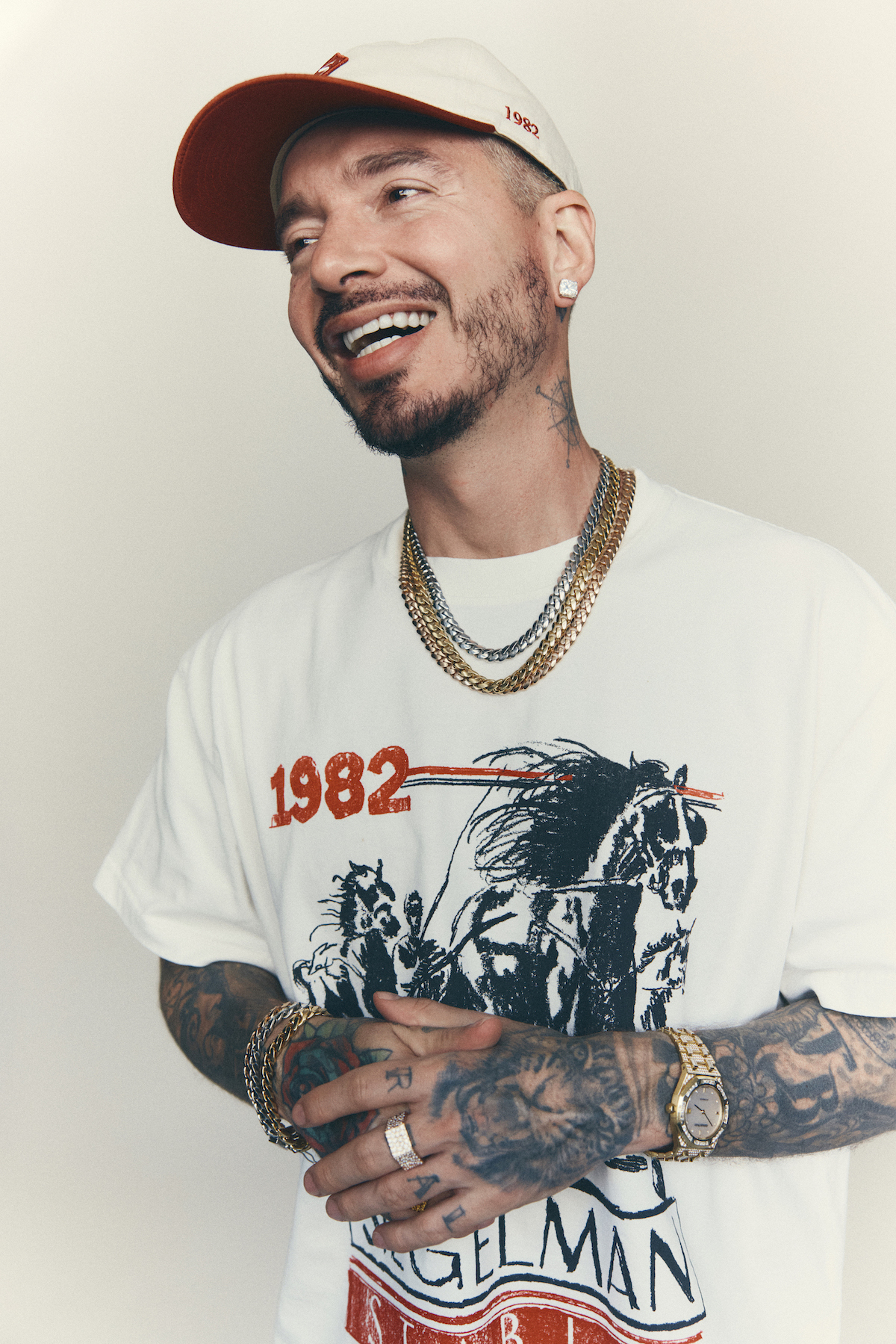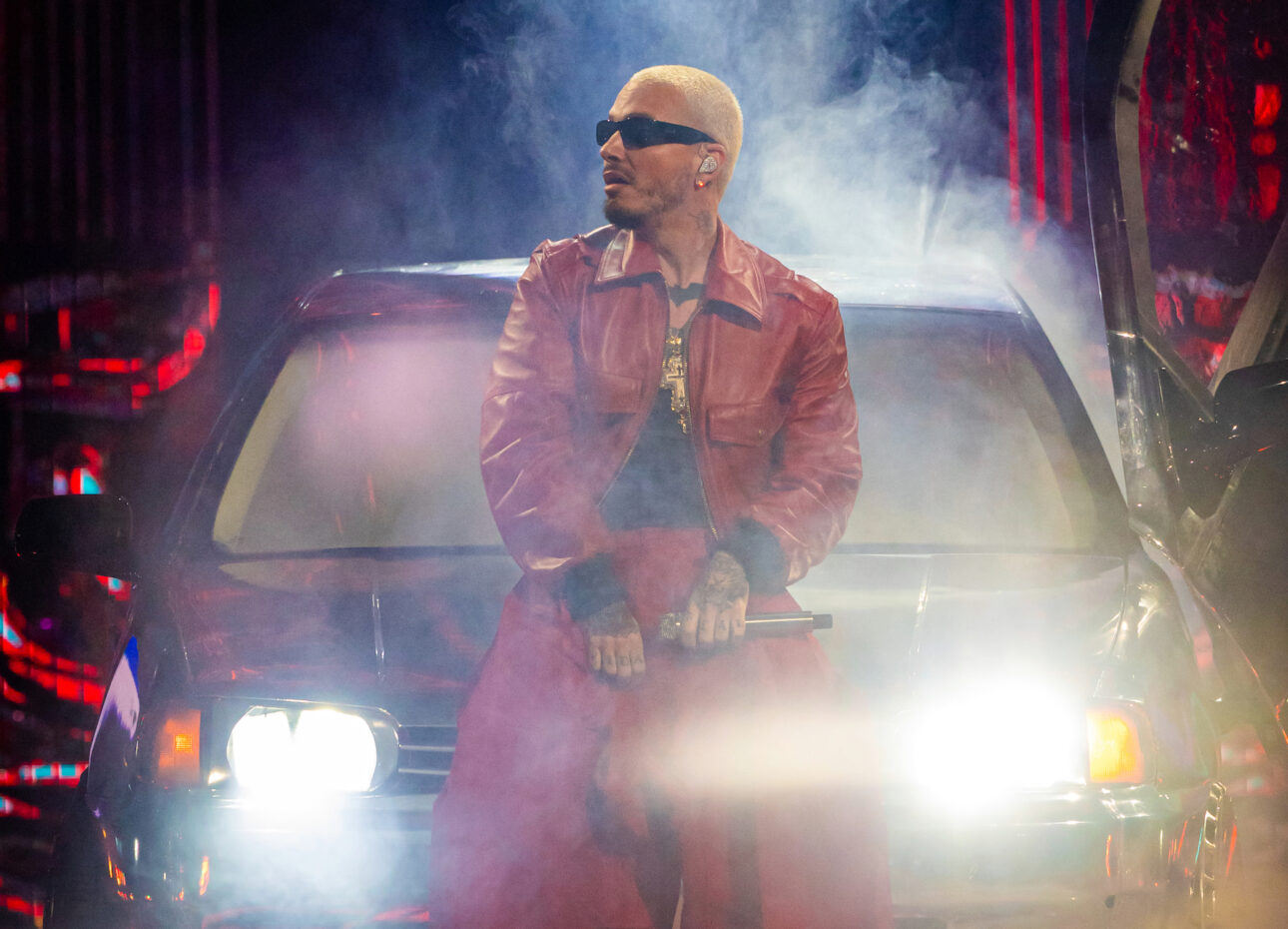On a sweltering midsummer day in New York City, J Balvin is being chauffeured to a promotional stop for his new album Mixteip, released July 17. In the past decade, the Colombian superstar is often credited as catapulting reggaeton back into the mainstream while introducing Latin music to new places and massive stages. At 40, he’s achieved more than 35 million in worldwide record sales, making him one of the best-selling Latin artists of all time.
As I’m along for the ride, I’m not surprised to observe that everything in Balvin’s orbit is go-go-go. What I didn’t expect is how grounded and zen he remains at the center of it all.
More from Spin:
- Lindsey Buckingham, Stevie Nicks’ Pre-Fleetwood Mac LP Set For Reissue
- Michael ‘Fitz’ Fitzpatrick of Fitz and the Tantrums Shares His 10 Essential Vacation Destinations
- Every Black Sabbath Album, Ranked
“This album comes from a different perspective…I don’t feel like I have to prove anything to anyone,” he says from the backseat, the morning sunshine coming through the windows. “It’s out of my hands how people react to the new music. You can only control your own thoughts and humble yourself. That’s how I feel right now with a more mature perspective.”
While racking up billions of streams and multiple Latin Grammy awards (not to mention his Billboard Latin Music Awards, MTV Music Video Awards, and Latin American Music Awards) J Balvin has unequivocally widened the market for Spanish-language music. His rainbow-hued hair and equally colorful persona caught the attention of pop stars like Justin Bieber, Beyoncé, and Ed Sheeran, who have collaborated with him. “It’s a blessing that they’re recognizing and appreciating what we do,” he says. “It feels amazing to have worked with them while knowing that they wanted to work with me because they understand my vision.”

Hailing from Medellín, the second-largest city in Colombia (referred to as the “City of Eternal Spring”), Balvin was born Jose Álvaro Osorio Balvín. Reggaeton music comes from the Caribbean with roots in Puerto Rico and Panama, so hit-makers in the genre from Colombia were far and few when he was growing up. Reggaeton reigned supreme in the 2000s thanks to the Puerto Rican pioneers Daddy Yankee, Don Omar, and Tego Calderón. Towards the end of that decade, the popularity of the genre started to wane, right when J Balvin’s music career was just beginning. He jolted new life into reggaeton while making Medellín a new hotbed for perreo—a sexy dance style, typically attributed to reggaeton—with 2013’s La Familia and 2016’s Energia. J Balvin’s unprecedented breakthrough made way for more stars from his hometown to emerge, including Maluma, Karol G, and Feid.
“I feel grateful that people think that I’m the one who opened the doors for Colombia like Daddy Yankee did in Puerto Rico,” he says. “It wasn’t easy. It was a really hard path to pave and I didn’t know where I was going, but I knew what I wanted. My intention was to have a place in this game and at the end, it opened the doors for the rest of the artists, and not just from Colombia, but other countries as well.”

J Balvin is known for his “Latino Gang” mantra. It’s his signature callout to say that he’s not only representing Colombia, but all Latinos around the world. J Balvin also uses the motto as a way of inviting other acts from Latin America and Spain to have a seat at the table with him. He has always had a keen eye for catching talent on the rise and sharing his platform with them. J Balvin helped Anitta break out of Brazil by collaborating with her on “Downtown” and put a bigger spotlight on Spanish artist Rosalía in “Brillo” and “Con Altura.” He also supported Bad Bunny on his way up when they joined forces on their 2019 album Oasis.
“When I started as an artist, I didn’t have that platform,” he says. “I was like, ‘If I have these tools, I’m going to use them to pay it forward.’ I didn’t do it expecting anything back. I did it for the love that I have for their work. I just thought that they were really cool. It’s good that I had great foresight because all of them right now are huge stars. Anyway, they were going to make it no matter what. I just used my platform to amplify what they had at that time.”
After La Familia made J Balvin a local hero in Colombia and Energia helped him extend his reach into the US, it was 2018’s Vibras that truly established him as a global phenomenon. The vibrant LP boasted his unifying smash “Mi Gente,” which Beyoncé later jumped on. While Latin acts before like Ricky Martin, Enrique Iglesias, and Shakira sang in English to crossover, J Balvin made his mark in the mainstream by singing solely in Spanish. Since then, he has continued to sing in his native tongue with genre-bending collabs, including “I Like It” with Cardi B, “Un Día (One Day)” with Dua Lipa, and “I Can’t Get Enough” with Selena Gomez and Benny Blanco.

“At that time, I didn’t know English, so I was like, ‘I got to keep it real and I’m just going to keep going in Spanish,’” he tells me. “I just thought, ‘I don’t want to suppress myself.’ The feelings that I have don’t sound as real when I don’t sing about them in Spanish. It was worth it to see where I’ve gone in the world by singing in Spanish. That’s mind-blowing to me and also, the power of making people want to learn Spanish.”
J Balvin has also used his platform to be a voice for mental health awareness—especially stigmatized in Latino communities that are ingrained with machismo (toxic masculinity). “They think they’re going to look weak talking about their situation,” he mentions. J Balvin has been transparent about his own struggles with mental health, speaking openly about his depression and anxiety diagnoses a few years back. After nearly a decade of hard work, he decided to take a step back following 2021’s Jose album to prioritize his mental health.
“I’m a really big advocate for mental health because I know how it feels,” he said. “I know the hell you feel when what’s going on is bad and you can’t control your thoughts, your emotions, or your body. There’s levels to it where maybe medication or trying to do different types of therapies can make you feel better.”

Family also took priority. In 2021, he became a father when his partner Valentina Ferrer gave birth to their son Rio. The baby’s heartbeat was incorporated into the song “Querido Rio” and now he reflects on life with his son and Ferrer in the euphoric “Rio.” In the latter track on Mixteip, J Balvin sings in Spanish, “You can notice the sparkle in my eyes and those who know me know that I’ve been healed.” He lights up when he starts talking about Rio.
“When it comes to music, I’m not changing the way I do [it],” he admits. “I just have to keep doing it for myself. If there’s any bad words, I just make sure that Rio doesn’t listen to it yet. But as a dad, it’s one of the most beautiful blessings to feel that someone is waiting for you at home. When you’re having a bad moment, no matter what, you have this person that’s going to energize you and keep you moving forward.”
Having found the perfect balance between his family and career, J Balvin is now in his best moment. That renewed energy is exemplified in his Mixteip album, which is a collection of 10 songs that flex his reggaeton prowess while showing his success isn’t tied to one genre. J Balvin taps into 2000s era perreo in the sultry “Zun Zun” with Lenny Tavárez and Justin Quiles and recalls his Bad Bunny-assisted hit “La Canción” in the nostalgic “PQBL.” He also ventures into genres like drill in “Uuu” with U.K. rapper Stormzy, merengue with Omega in “KLK,” and salsa in “Misterio” with Gilberto Santa Rosa.
“I thought, ‘Why am I going to keep these songs that I feel are great in the studio when they [should] be out there?’” J Balvin said. “These are songs that I like. I want to show off my versatility and that I can swim in different waters and that I feel comfortable with it.”
After wrapping up his Back to the Rayo Tour in the U.S., J Balvin has more international dates ahead, including concerts in Mexico, Japan, Spain, Brazil, and a homecoming show in Medellín. “There’s always cycles in your career when you’re up and down,” he says. “It depends on how you take those moments and how you can keep growing as an artist to prove that you were born to be in this artform.”
To see our running list of the top 100 greatest rock stars of all time, click here.



